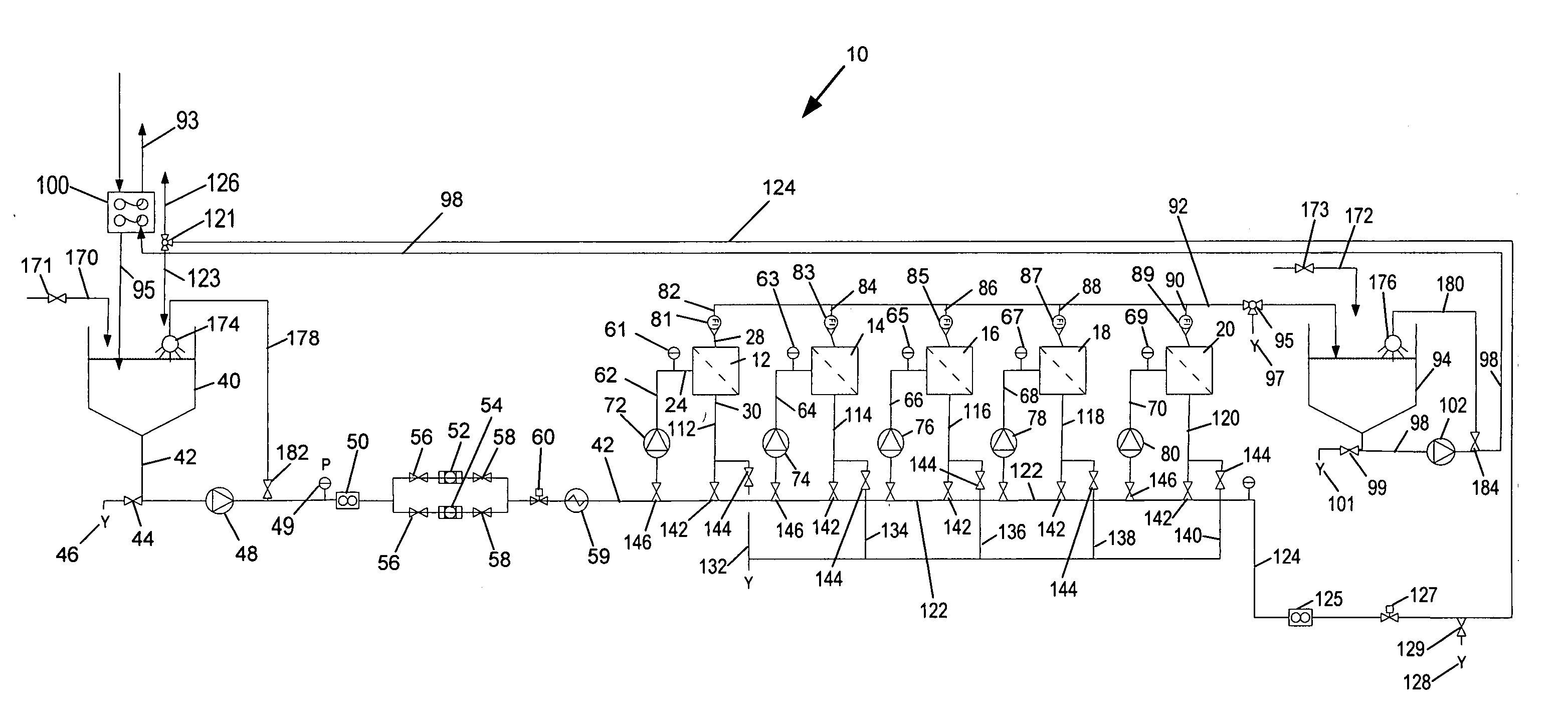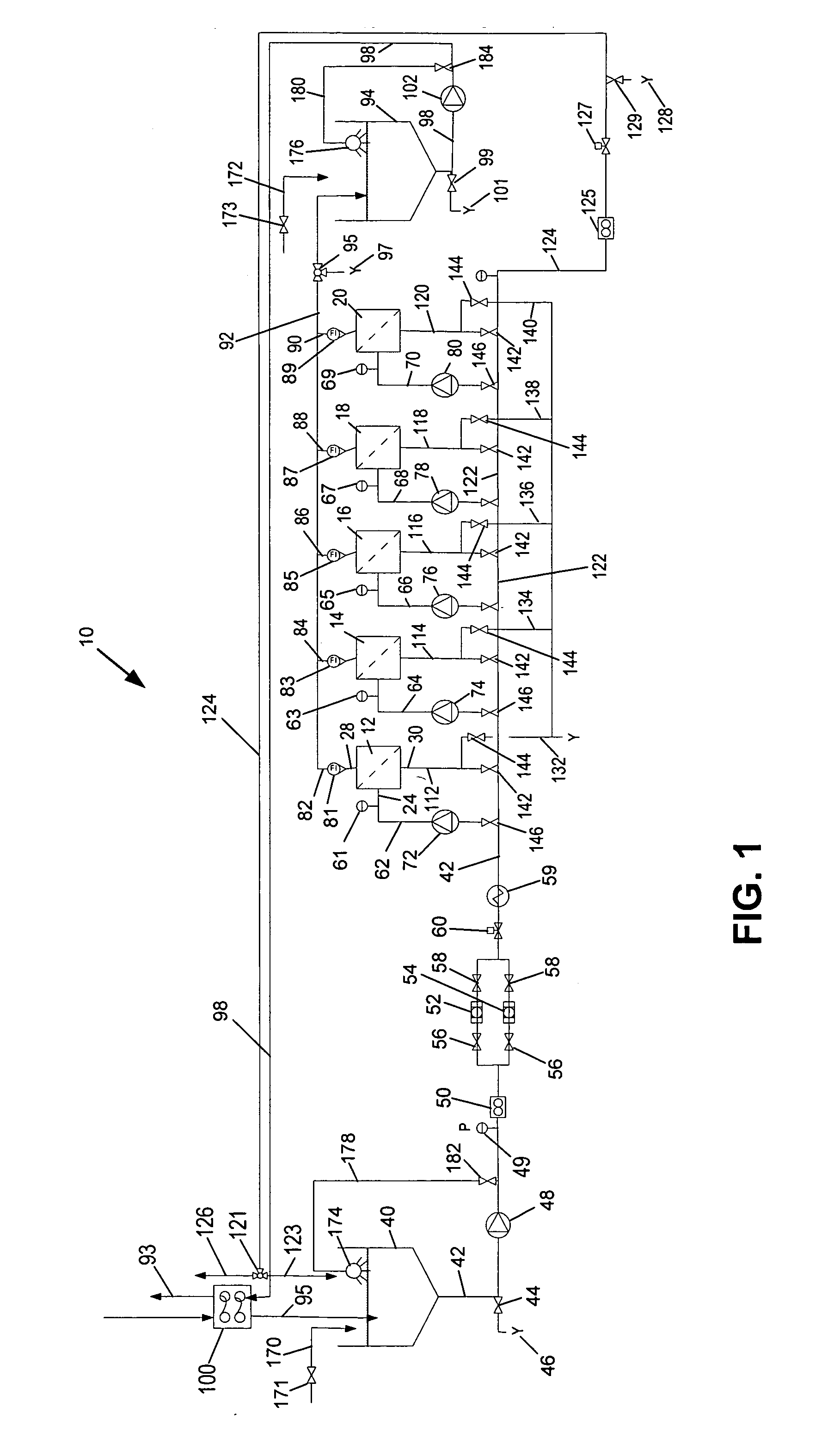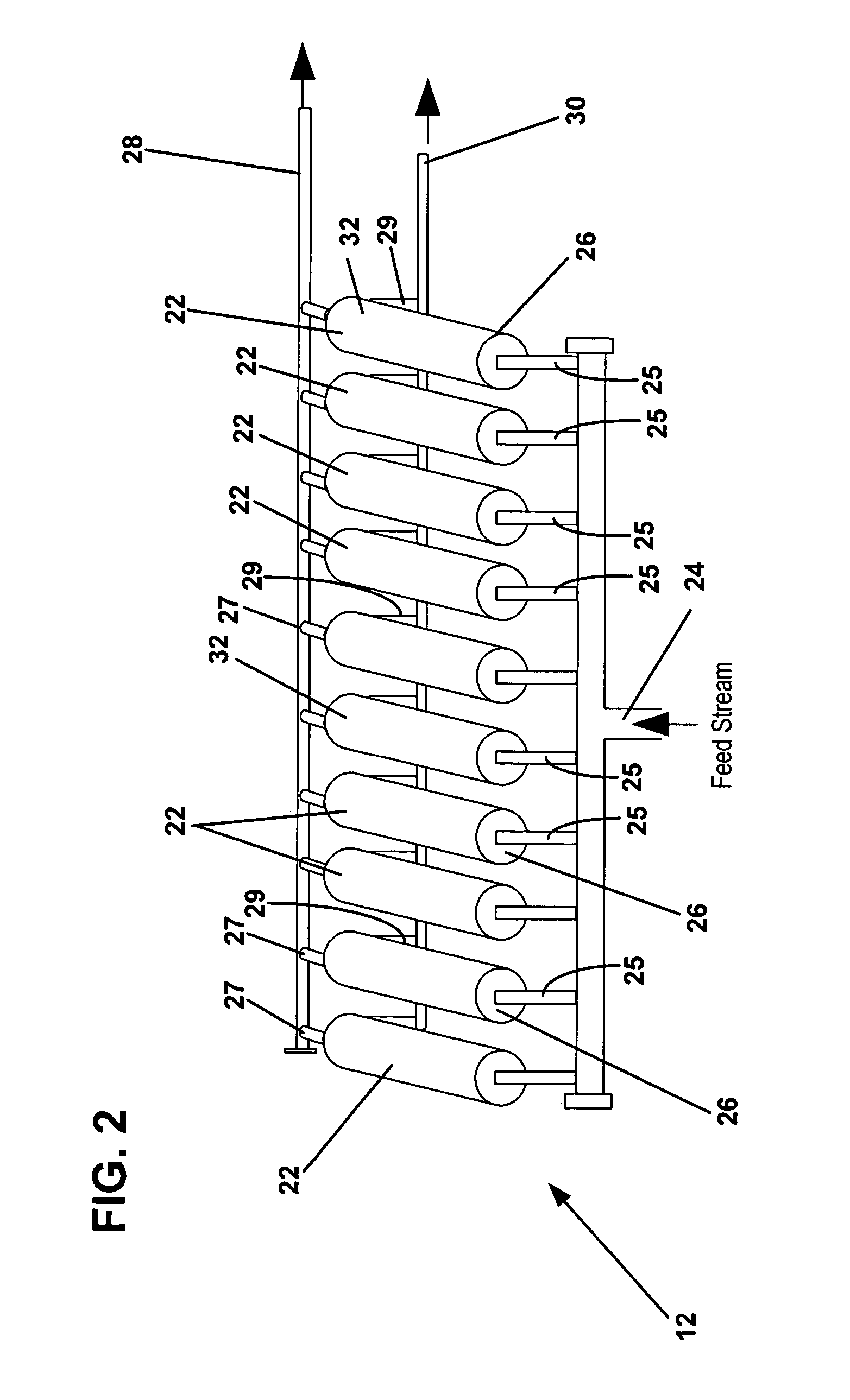Methods for treating membranes and separation facilities and membrane treatment composition
a technology of membrane treatment and separation facilities, applied in the direction of cleaning hollow articles, separation processes, liquid cleaning, etc., can solve the problems of filtration membranes that have a tendency to foul during processing, complex membrane fouling process, and almost all feed components to a certain exten
- Summary
- Abstract
- Description
- Claims
- Application Information
AI Technical Summary
Benefits of technology
Problems solved by technology
Method used
Image
Examples
example 1
Exemplary Conventional Membrane Treatment
[0156] The following procedure was performed on an ultrafiltration membrane to document a conventional treatment. The membrane was analyzed and soiled as the above procedures describe. After soiling, the flux decrease to 7% of the original value indicating a severely soiled membrane. Table 4 describes the treatment parameters. During this treatment process the inlet pressure was 30 psig and the outlet pressure was 15 psig creating a cross-flow process. These parameters resulted in a total flow rate of about 30 gallons per minute. Table 5 describes the treatment results where “% Flux Recovery” is a direct measurement of the efficacy of the treatment. Using conventional procedures and Ultrasil chemistry from Ecolab, Inc., the % Flux Recovery was 82% which for a new membrane is quite typical. [0157] Membrane type=Ultrafiltration, polyethersulfone [0158] Manufacturer / Model=GE Osmonics, PW3838C Durasan [0159] Pressure (in)=30 psig [0160] Pressure...
example 2
[0164] A hybrid membrane treatment utilizing both conventional cross-flow treatment and multiple phase air / liquid treatment was evaluated. The ability to use a higher concentration of buffered enzyme product was also evaluated. This highly concentrated chemistry was approximately ten times the typical use concentration and had a pH of 9.62 which is within the pH limitations of these particular UF membranes. After soiling, the membrane had a flux of 6% of the clean water flux indicating a severely soiled membrane. In this example a single-pass multiple phase treatment was performed during the alkaline / enzyme step meaning the solution was not re-circulated, but rather passed over the membrane and then to drain. Table 6 describes the treatment parameters and Table 7 provides the results of the treatment as measured by permeate flux. Using the conventional and multiple phase flow hybrid approach with the higher concentration of chemistry resulted in a 90% flux recovery using 16 minutes ...
example 3
[0166] Various liquid injection rates and air flow rates were tested to determine a reasonably low air and liquid combination while still obtaining adequate coverage of the ultrafiltration membrane. This was a visual observation based upon the flow and converage of the liquid out of the downstream end of the membrane. It was also intended to ensure that the majority of air and liquid does not permeate. After observing various test parameters, it was determined that the conditions of air delivery at 10 psig and liquid flow of 0.38 gpm resulted in a good atomized flow from the downstream end of a single 4 inch diameter by 38 inch long polysulfone membrane. This results in an air volume of about 20 scfm, a velocity of about 2-4 fps and an air to liquid ratio of about 183:1 to 307:1.
PUM
 Login to View More
Login to View More Abstract
Description
Claims
Application Information
 Login to View More
Login to View More - R&D
- Intellectual Property
- Life Sciences
- Materials
- Tech Scout
- Unparalleled Data Quality
- Higher Quality Content
- 60% Fewer Hallucinations
Browse by: Latest US Patents, China's latest patents, Technical Efficacy Thesaurus, Application Domain, Technology Topic, Popular Technical Reports.
© 2025 PatSnap. All rights reserved.Legal|Privacy policy|Modern Slavery Act Transparency Statement|Sitemap|About US| Contact US: help@patsnap.com



